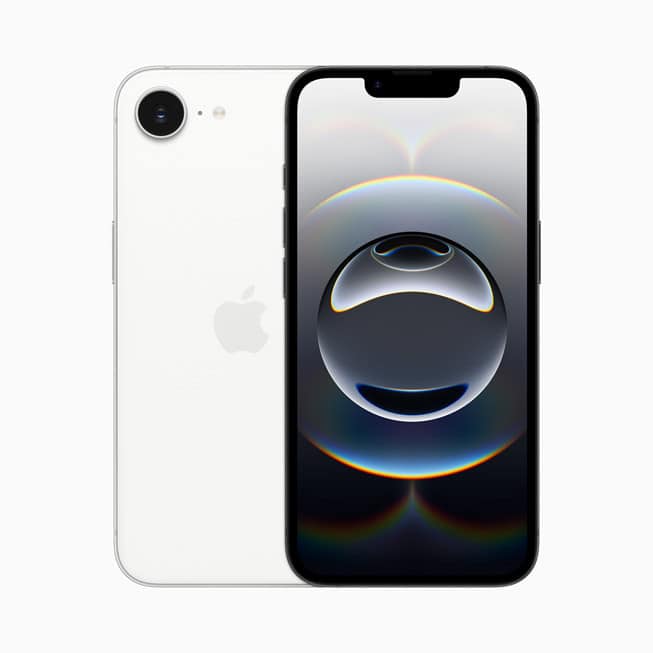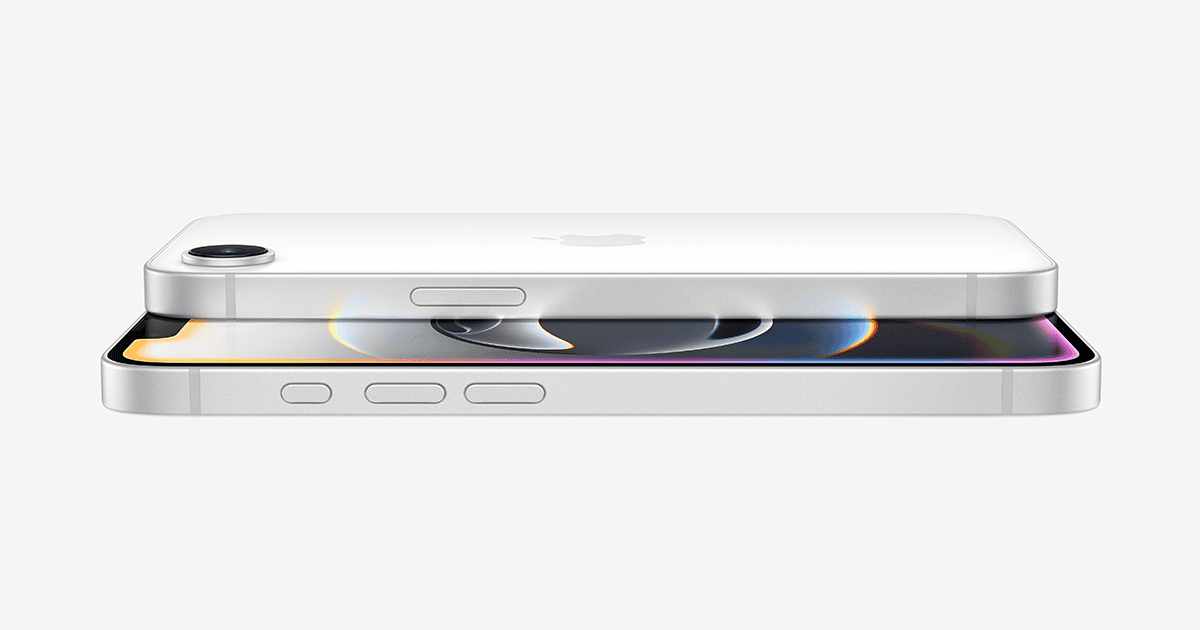Apple has announced its latest budget-friendly smartphone, the iPhone 16e, starting at $599, a full $200 less than the standard iPhone 16. While the price tag is enticing, this reduction comes with several key compromises, strategically designed to differentiate it from its more expensive counterpart.
And while this model is $200 cheaper than the more premium iPhone 16, it should be noted that Apple did choose to sell it a full $100 more than the rumored $499 price tag that most industry insiders had been pitching before the actual release. Some think that this is related to tariffs and rising costs – while others think it’s to create a stepping stone to a higher priced iPhone 17 lineup that should be out this fall.
Either way, the iPhone 16e is the lowest-priced modern generation iPhone you can currently get so we decided to compare it to the rest of the iPhone lineup so you can make a decision.

Why Is the iPhone 16e Cheaper?
The iPhone 16e cuts costs by trimming down on premium features while still maintaining the core Apple experience. Here’s how it achieves that lower price point:
| Feature | iPhone 16e | iPhone 16 |
|---|---|---|
| Price | $599 | $799 |
| Camera System | Single 48MP Fusion camera | 48MP Main + 12MP Ultra Wide |
| Display | 6.1-inch Super Retina XDR (Notch) | 6.1-inch Super Retina XDR (Dynamic Island) |
| Dynamic Island | No | Yes |
| MagSafe Support | No | Yes |
| Charging Speed | 7.5W Qi charging | Faster MagSafe charging |
| 5G Connectivity | Sub-6GHz 5G (No mmWave) | Sub-6GHz & mmWave 5G |
| Processor | Binned version of iPhone 16 chip | Full version of chip |
| GPU Cores | One less core | Full cores |
| Ultra Wideband (UWB) | No | Yes |
| Camera Control Button | No | Yes |
| Wireless Charging | Standard Qi Wireless | MagSafe Wireless |
| Design | Classic Notch | Dynamic Island |
📸 Camera System: Simplified But Capable
The iPhone 16e features a single 48-megapixel Fusion camera, eliminating the 12-megapixel Ultra Wide lens found on the iPhone 16. This means users lose access to ultra-wide-angle photography and macro capabilities, which may be a dealbreaker for photography enthusiasts. However, for everyday shots and casual users, the main camera still offers solid performance.
📱 Display: A Step Back in Design
Both devices come with a 6.1-inch Super Retina XDR display, but the iPhone 16e retains the classic notch design, while the iPhone 16 sports the more modern Dynamic Island. This change affects the interactive experience, as Dynamic Island offers real-time updates and more intuitive multitasking features that the 16e misses out on.
⚡ Charging & Accessories: No MagSafe
One of the more significant omissions is MagSafe support. The iPhone 16e relies on standard Qi wireless charging capped at 7.5W, compared to the faster, magnetically-aligned MagSafe system. This limits accessory compatibility and charging efficiency for users who have invested in MagSafe ecosystems.
📶 Connectivity: A New In-House Modem—With Limits
The iPhone 16e debuts Apple’s first in-house modem, the C1, supporting sub-6GHz 5G but dropping mmWave 5G compatibility. While sub-6GHz offers solid nationwide coverage, mmWave delivers blazing-fast speeds in select areas, something only the iPhone 16 supports.
🎮 Performance: Slightly Less Power Under the Hood
Though the iPhone 16e runs a variant of the same chip as the iPhone 16, it’s a binned version with one less GPU core, leading to slightly reduced graphics performance. For everyday tasks like browsing and messaging, users won’t notice much difference, but gamers and power users might feel the impact.
📡 Ultra Wideband (UWB): Left Out
The iPhone 16e also skips out on Ultra Wideband (UWB) support, which affects features like Precision Finding for AirTags and seamless Handoff experiences between Apple devices.
📷 New Features That Didn’t Make the Cut
Another absence is the Camera Control button found on the iPhone 16, designed for quicker photo and video capture. While not essential for everyone, content creators might miss this added convenience.
Who Is the iPhone 16e For?
The iPhone 16e caters to budget-conscious consumers who value Apple’s ecosystem but can forgo some high-end features. It’s perfect for:
- Casual users who prioritize basic functionality over cutting-edge tech.
- Students or those looking for a secondary device.
- Consumers who want a new iPhone but can’t justify the premium for features like MagSafe, Dynamic Island, or advanced photography tools.
Final Thoughts: Value vs. Features
Apple’s iPhone 16e strikes a balance between affordability and functionality. While it sacrifices some hallmark features—like MagSafe, Dynamic Island, and mmWave 5G—it remains a powerful and reliable iPhone for those who don’t need the latest bells and whistles. At $599, it presents a strong value proposition, especially for users who primarily use their phones for calls, messaging, browsing, and occasional photography.
However, for tech enthusiasts or anyone deeply integrated into Apple’s ecosystem, the additional $200 for the standard iPhone 16 might be worth it for the enhanced camera system, faster charging, and broader 5G support.
The iPhone 16e is proof that Apple knows how to play the budget game—delivering just enough without cannibalizing its premium offerings.
Key Takeaways
- The iPhone 16e saves buyers $200 through strategic feature compromises
- Essential iPhone features remain intact despite the lower price point
- Hardware differences create distinct tiers in Apple’s iPhone lineup
Comparative Features and Specifications
The iPhone 16e implements several cost-saving measures that result in its lower price point compared to the standard iPhone 16. The differences span across display technology, camera systems, and internal hardware specifications.
Display and Design
The iPhone 16e features a 6.1-inch Super Retina XDR OLED display, matching the iPhone 16 in size. The screen lacks Dynamic Island functionality, instead retaining a traditional notch design.
Both phones share an aluminum frame and Ceramic Shield front glass. The 16e’s display reaches a peak brightness of 1000 nits, while the iPhone 16 pushes to 1200 nits.
Physical dimensions remain nearly identical, with the 16e measuring 5.78 inches in height versus the iPhone 16’s slightly taller frame. Both maintain a width of 2.82 inches and thickness of 0.31 inches.
Camera Capabilities
The iPhone 16e comes with a single 12MP main camera, omitting the ultrawide lens found on the iPhone 16.
The main sensor supports optical image stabilization and Photographic Styles, but lacks the advanced computational photography features of its pricier sibling.
Video recording capabilities include 4K at 60fps, though without the enhanced stabilization modes of the dual-camera iPhone 16.
Performance and Hardware
The iPhone 16e uses a binned version of the A18 chip with one less GPU core than the standard iPhone 16.
Base storage starts at 128GB for both models. The 16e includes:
- Reduced RAM compared to iPhone 16
- No Ultra Wideband chip
- Standard charging speeds up to 20W
- No MagSafe support
The new Action button and Camera Control button appear on both models, providing quick access to customizable functions and photography controls.
Connectivity and Power
The iPhone 16e makes notable compromises in charging capabilities and wireless features to achieve its lower price point compared to the standard iPhone 16.
Charging and Battery Life
The iPhone 16e supports USB-C charging at speeds up to 20W, which is slower than the iPhone 16’s 27W charging capability. A full charge takes about 2 hours.
The device lacks MagSafe wireless charging support. Users must rely on standard Qi wireless charging at 7.5W, which is significantly slower than MagSafe’s 15W speeds.
The battery capacity matches the iPhone 16 at 3,349mAh. Daily battery life reaches up to 16 hours of typical use, with the A18 chip’s power efficiency helping to extend usage time.
Wireless Technologies
The iPhone 16e supports Wi-Fi 6E rather than the newer Wi-Fi 7 standard found in the iPhone 16. This still delivers fast wireless speeds but lacks some advanced features.
The removal of the Ultra Wideband (UWB) chip limits certain proximity-based features like precise Find My device location and enhanced AirDrop capabilities.
Bluetooth 5.3 provides reliable wireless audio and accessory connectivity. The device maintains 5G cellular support with both sub-6GHz and mmWave compatibility in supported regions.
NFC capabilities remain for Apple Pay and digital key functionality, though the lack of UWB reduces the precision of some smart home integrations.
Frequently Asked Questions
The iPhone 16e brings significant cost savings through specific feature reductions compared to the standard iPhone 16 model. These differences span across hardware capabilities, display technology, and processing power.
What features are excluded from the iPhone 16e compared to the iPhone 16?
The iPhone 16e lacks MagSafe wireless charging support, making it compatible only with standard Qi wireless charging.
The device retains the traditional notch design instead of the Dynamic Island found on the iPhone 16.
How does the camera capability of the iPhone 16e differ from that of the iPhone 16?
The iPhone 16e features a single rear camera instead of the dual-camera system on the iPhone 16.
The ultrawide photography options are not available on the 16e model.
What are the screen technology differences between the iPhone 16e and the iPhone 16?
The iPhone 16e uses an LCD display rather than the OLED technology found in the iPhone 16.
The screen offers lower brightness levels and reduced color accuracy compared to the iPhone 16’s display.
Does the iPhone 16e have a different processing chip than the iPhone 16, and how does it affect performance?
The iPhone 16e uses a binned version of the main iPhone 16 processor.
This modified chip runs at lower clock speeds and includes one less GPU core, resulting in reduced graphics performance.
What charging capabilities are compromised in the iPhone 16e?
The iPhone 16e supports slower charging speeds compared to the iPhone 16.
The device is limited to 20W wired charging and 7.5W wireless charging capabilities.
Is the iPhone 16e lacking an Ultra Wideband (UWB) chip, and what are the consequences?
The iPhone 16e does not include the UWB chip found in the standard iPhone 16.
This omission affects precise location tracking with AirTags and reduces compatibility with certain smart home features.
Users cannot use precision finding features with compatible accessories or take advantage of spatial awareness functions.







